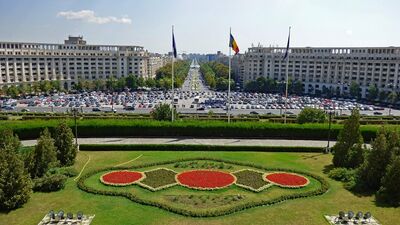News
Romania`s traffic rules

On the occasion of this event, this article focuses on the main traffic rules currently in force in Romania.
In principle, the speed limits in Germany and Romania are comparable. However, Romania has different speed limits for different types of vehicles in the same area.
Anyone travelling regularly by car must adhere to a speed limit of 50 km/h in urban areas. Anyone entering a built-up area will recognise this by the sign ‘Intrare în localitate’. Outside built-up areas, the speed limit is 90 km/h. Leaving a built-up area is indicated by ‘Ieșire din localitate’.
Sometimes other speed limits apply. However, these are clearly indicated on traffic signs and are difficult to miss. The speed limit is 100 km/h on dual carriageways (drum rapid/drum expres) and 130 km/h on motorways (autostrada). The same rules apply to motorcycles. Vehicles with sidecars or campers may have to drive slower.
The good news is that fuel prices are much lower than in Germany. According to weekly averages from the European Commission, the average price per litre is around €1.50.
Roundabouts, pedestrian crossings and traffic lights are also very important. Roundabouts are often multi-lane, so it is not only necessary to indicate when leaving the roundabout. It must also be indicated when entering the roundabout. Occasionally, roundabouts are marked with the traffic sign "Giratoriu". Special features arise when this traffic sign is combined with another one. This indicates that the traffic on the roundabout has priority. In short, you must move into the appropriate lane before entering the roundabout. Sometimes the lanes in front of the roundabout also indicate which lane you must take, for example, to take the second exit.
Pedestrian crossings work in a similar way to Germany, but pedestrian lights must always be obeyed. When cars are allowed to go at the traffic lights, they turn green immediately. This is different from Germany, where traffic lights have yellow phases. However, the waiting time is indicated by a second counter. However, if the light turns red, there is a yellow transition signal, after which pedestrians have 14 seconds to cross the road. The peculiarity is that there is a so-called clearance time signal. The green pedestrian light flashes three times before turning red again.
It is also important to remember to switch on the lights during the day. In Romania, dipped headlights must be switched on during the day.
In Germany, a first aid kit, warning triangle, high-visibility vest, etc. must be carried in every vehicle. In Romania, a small fire extinguisher and two warning triangles are also required.
Source: Pixabay/ bucharest-2711816_1280
